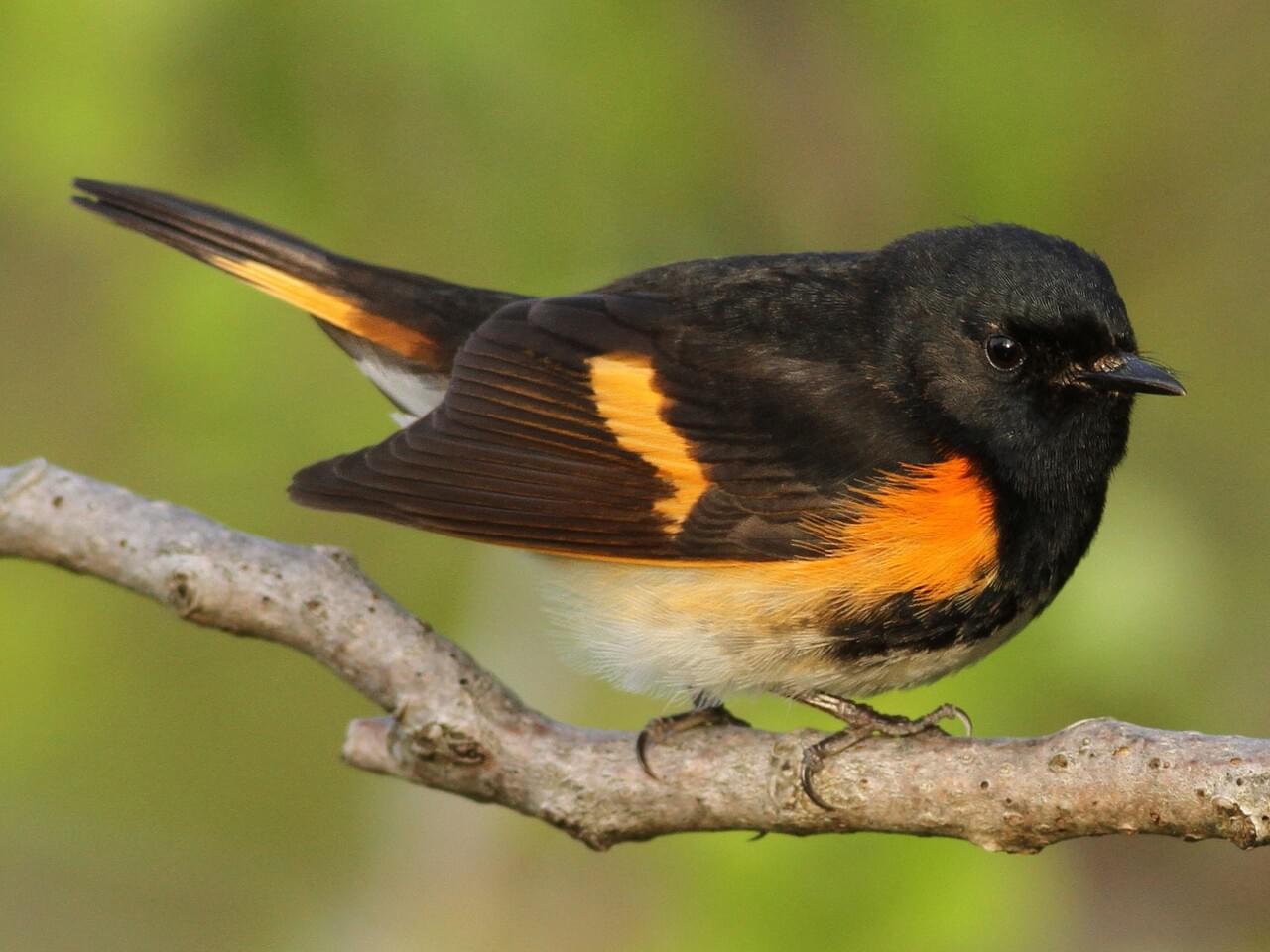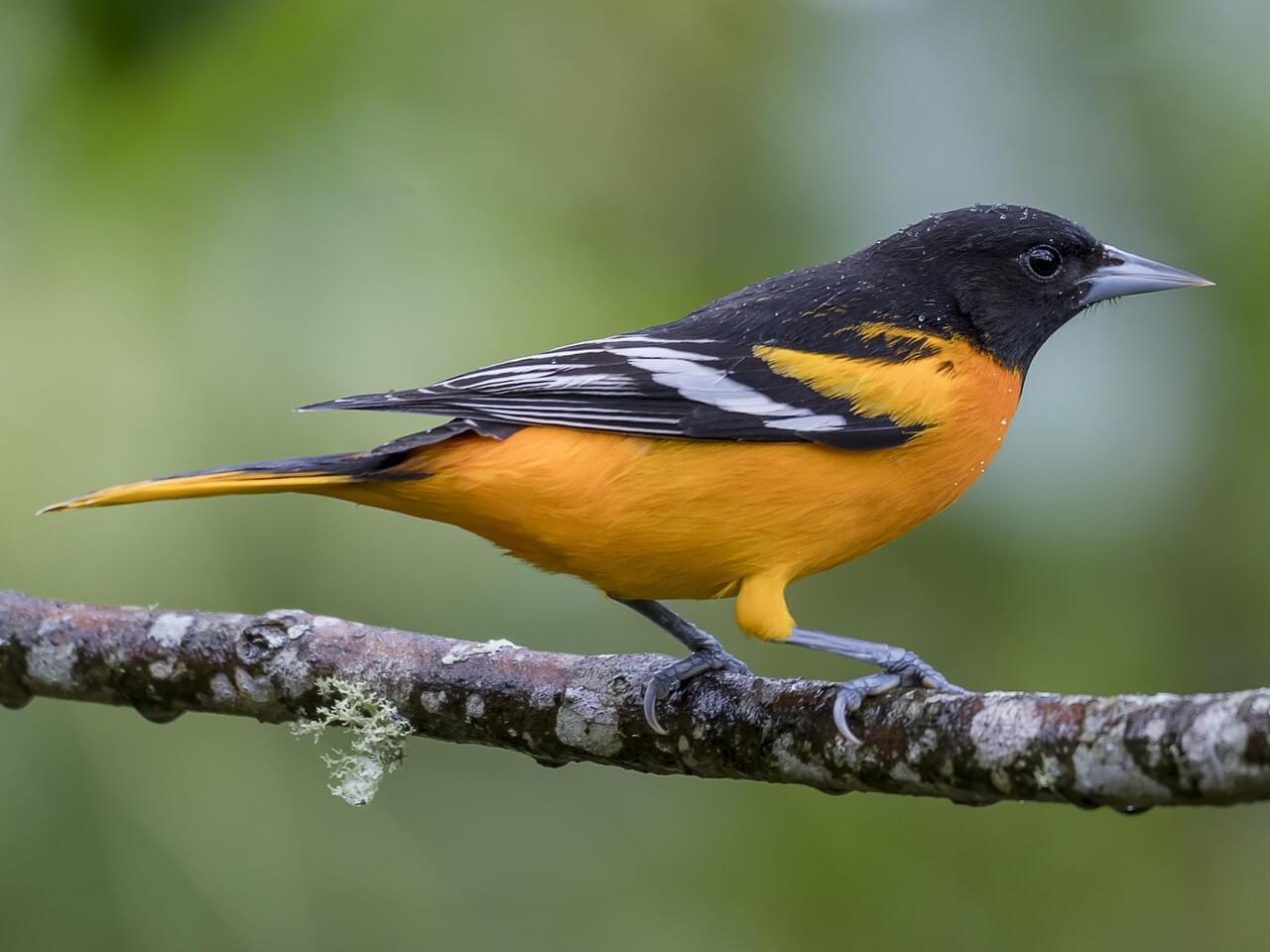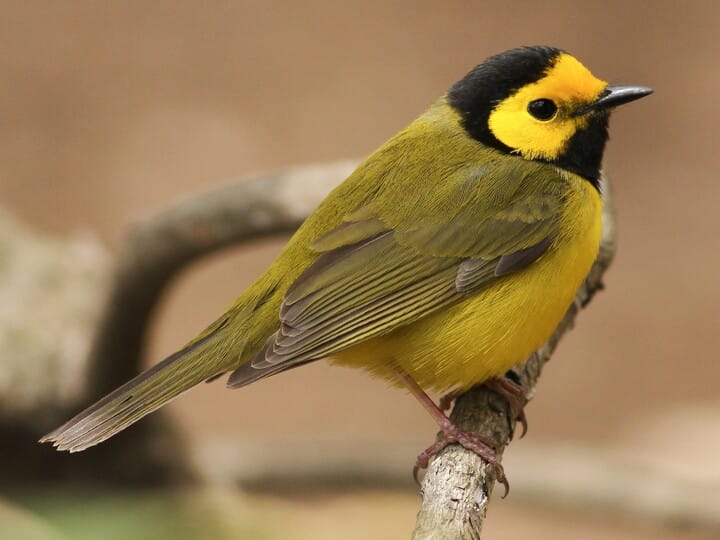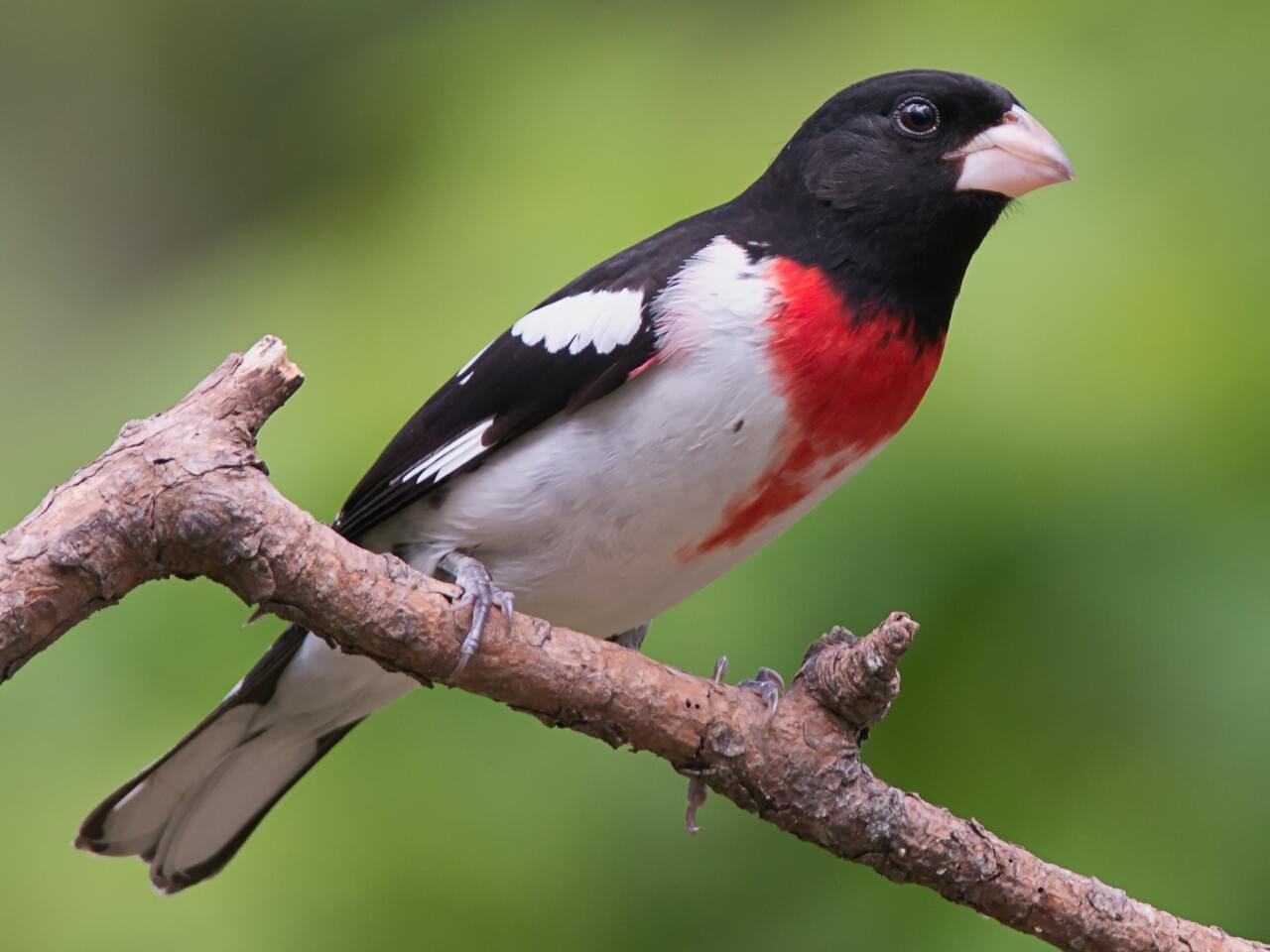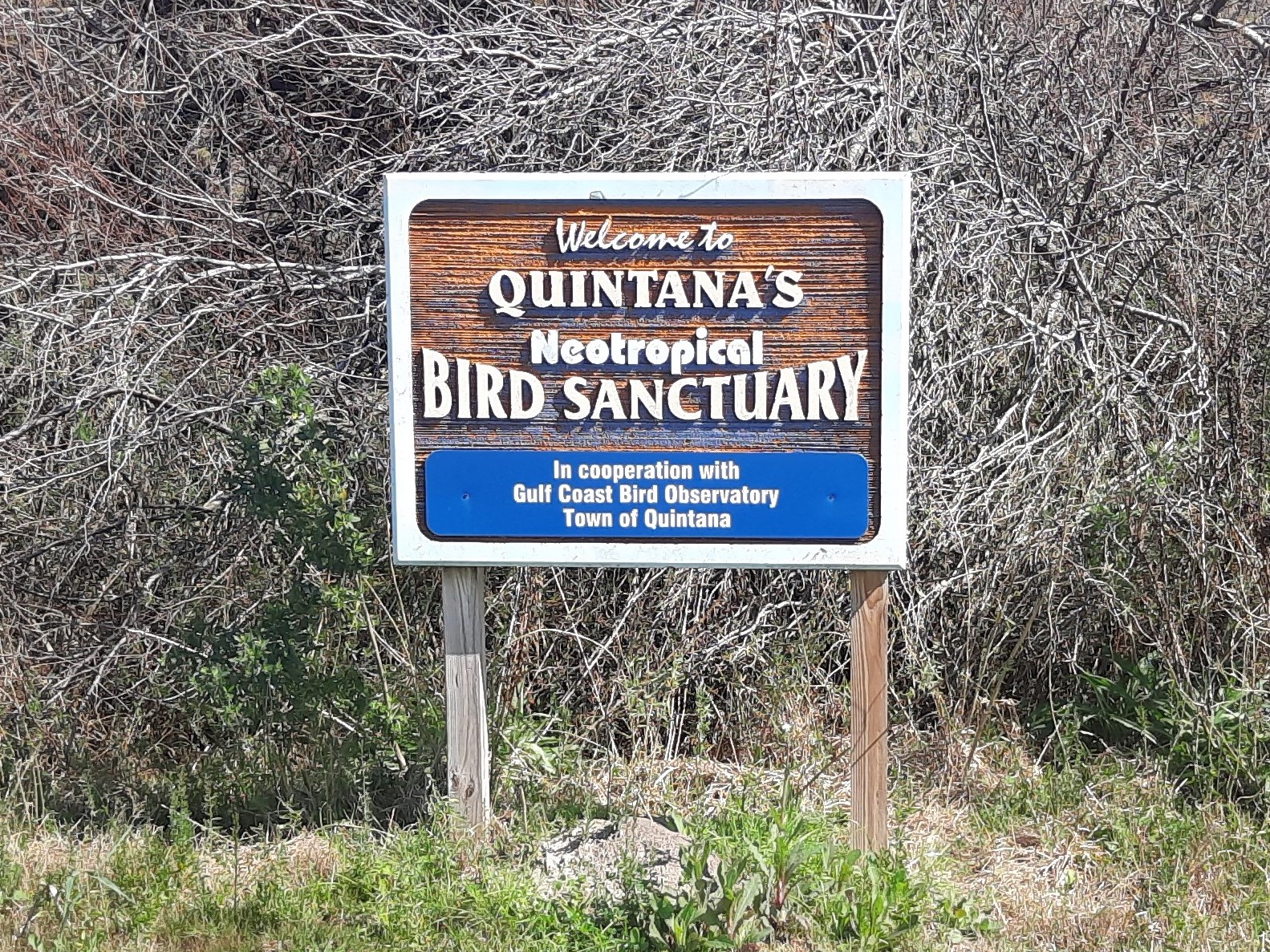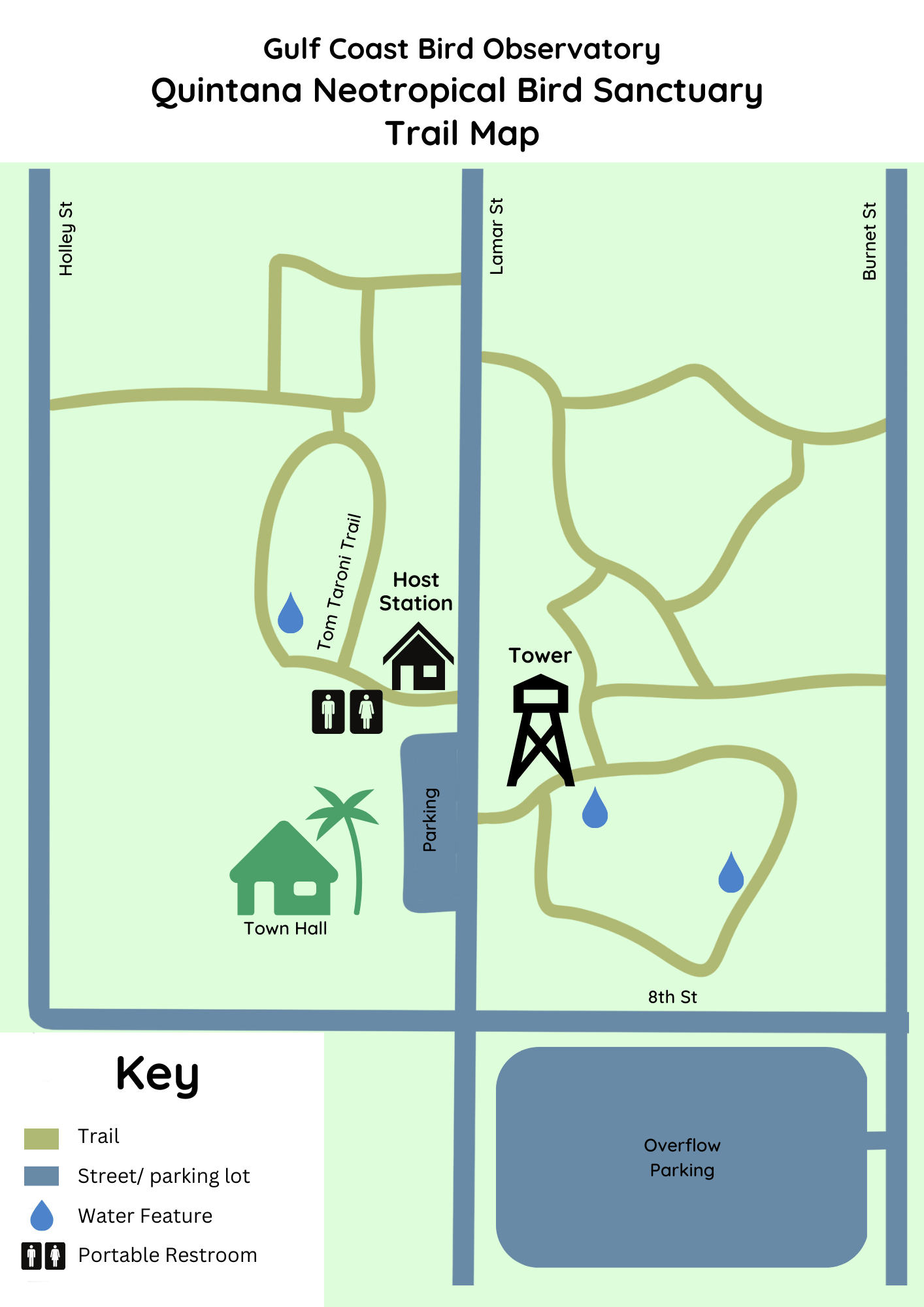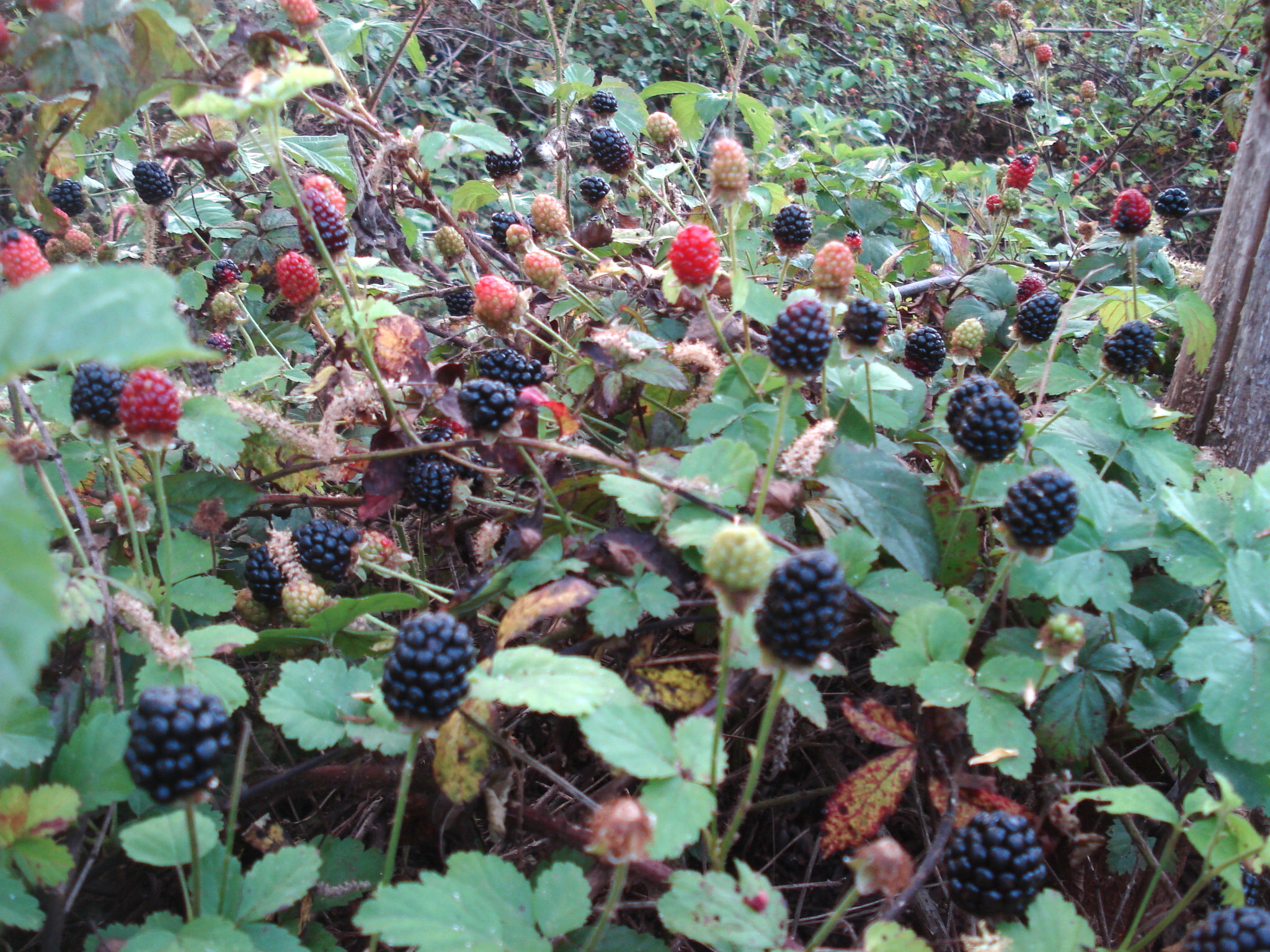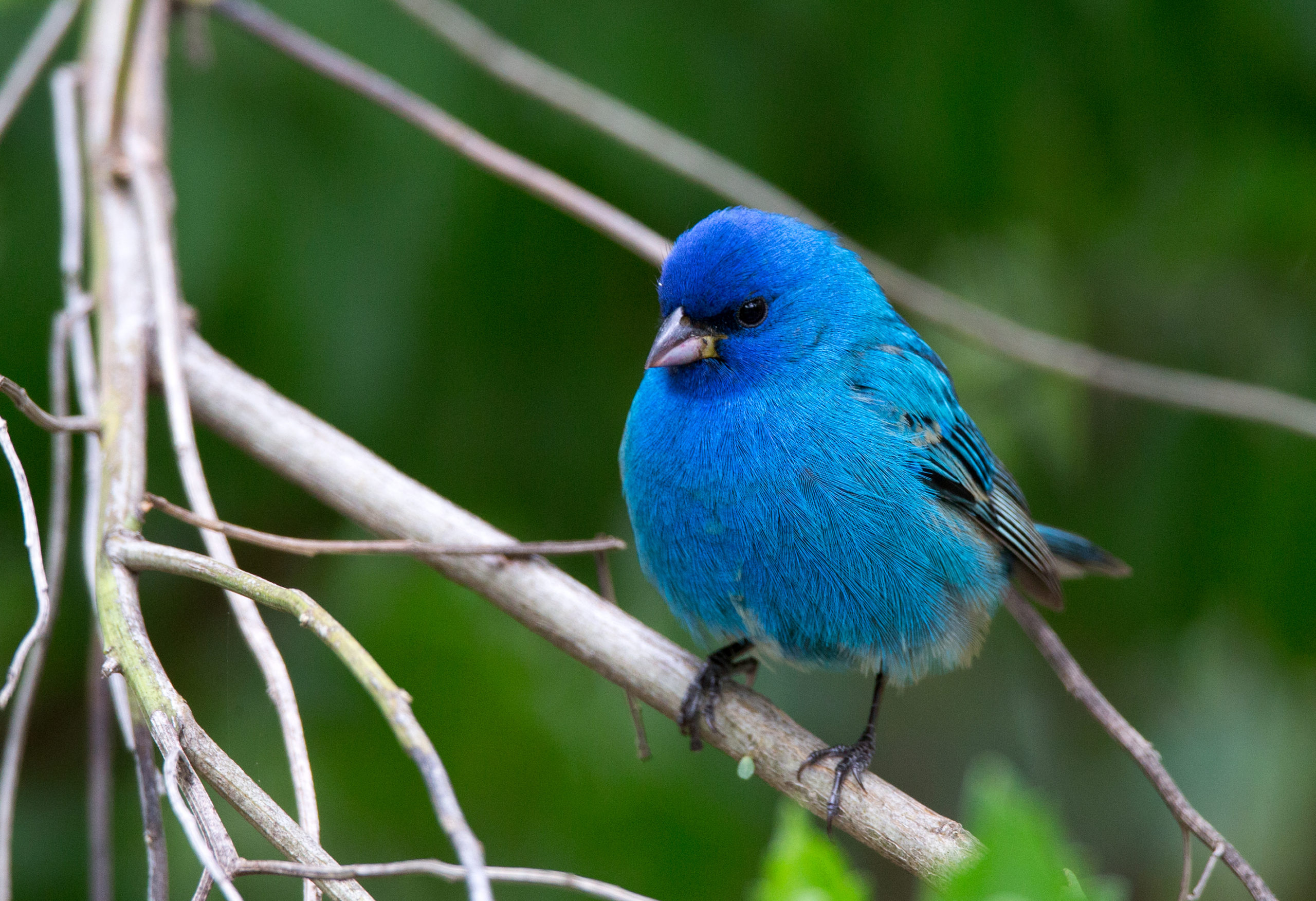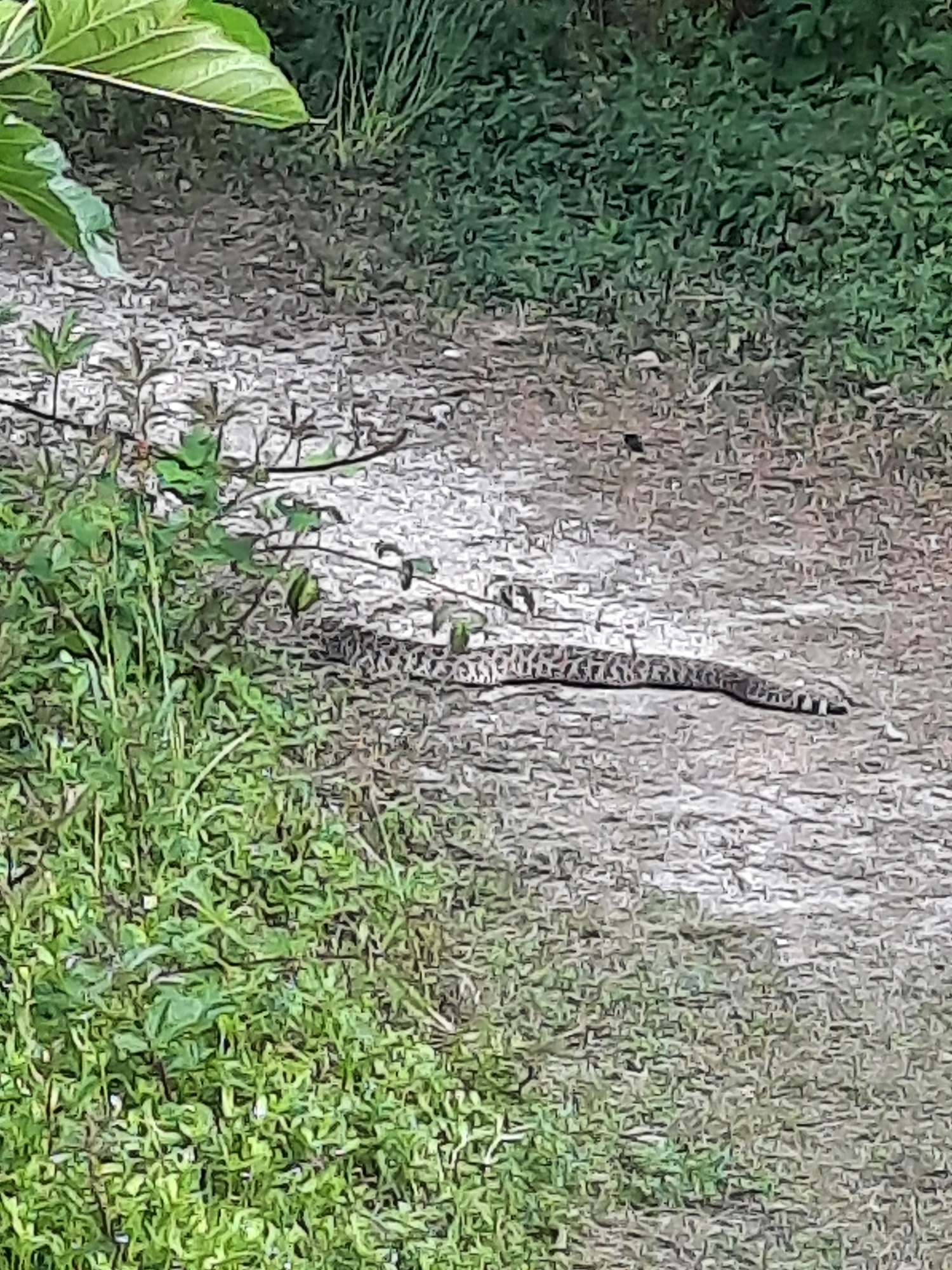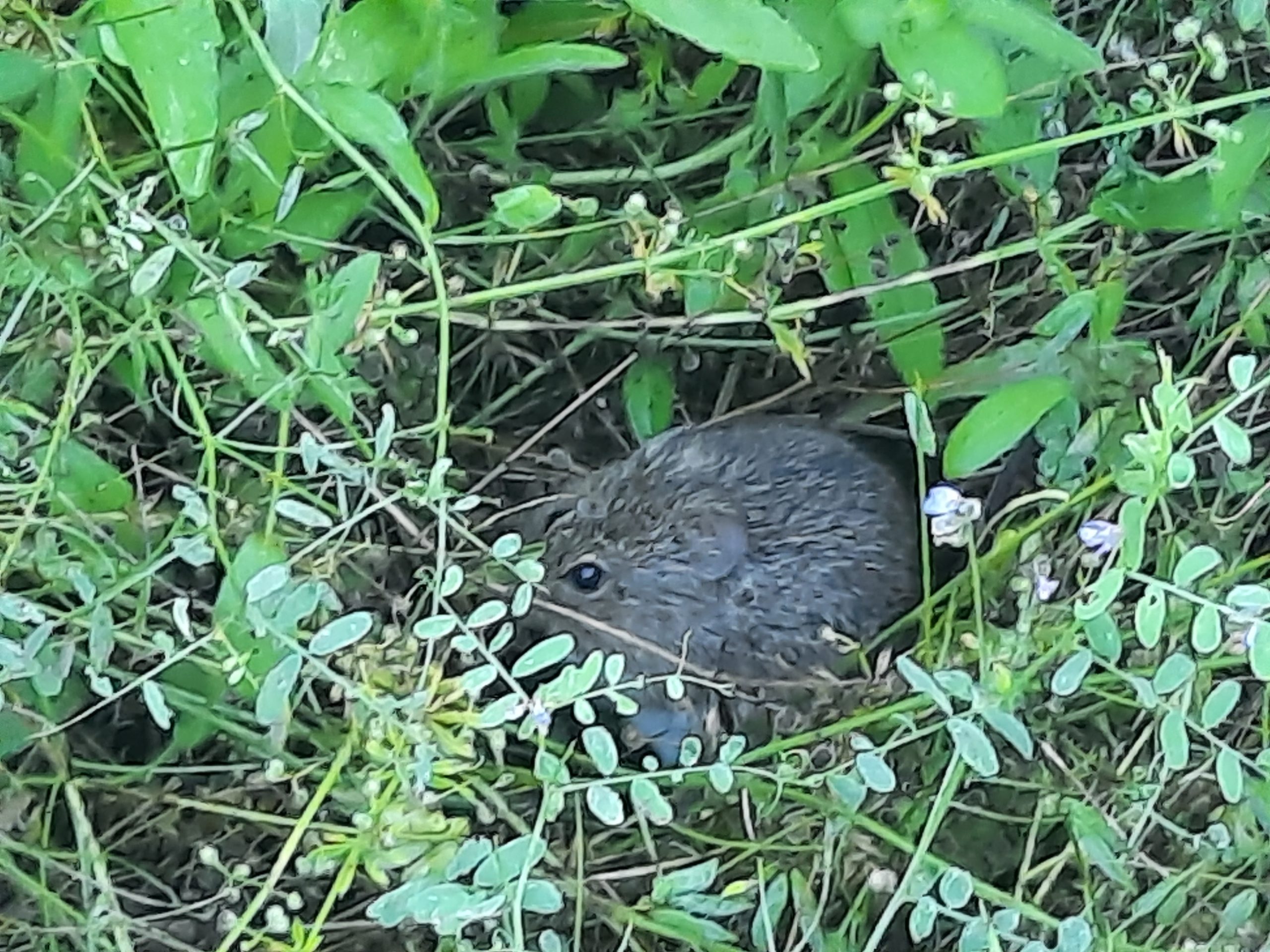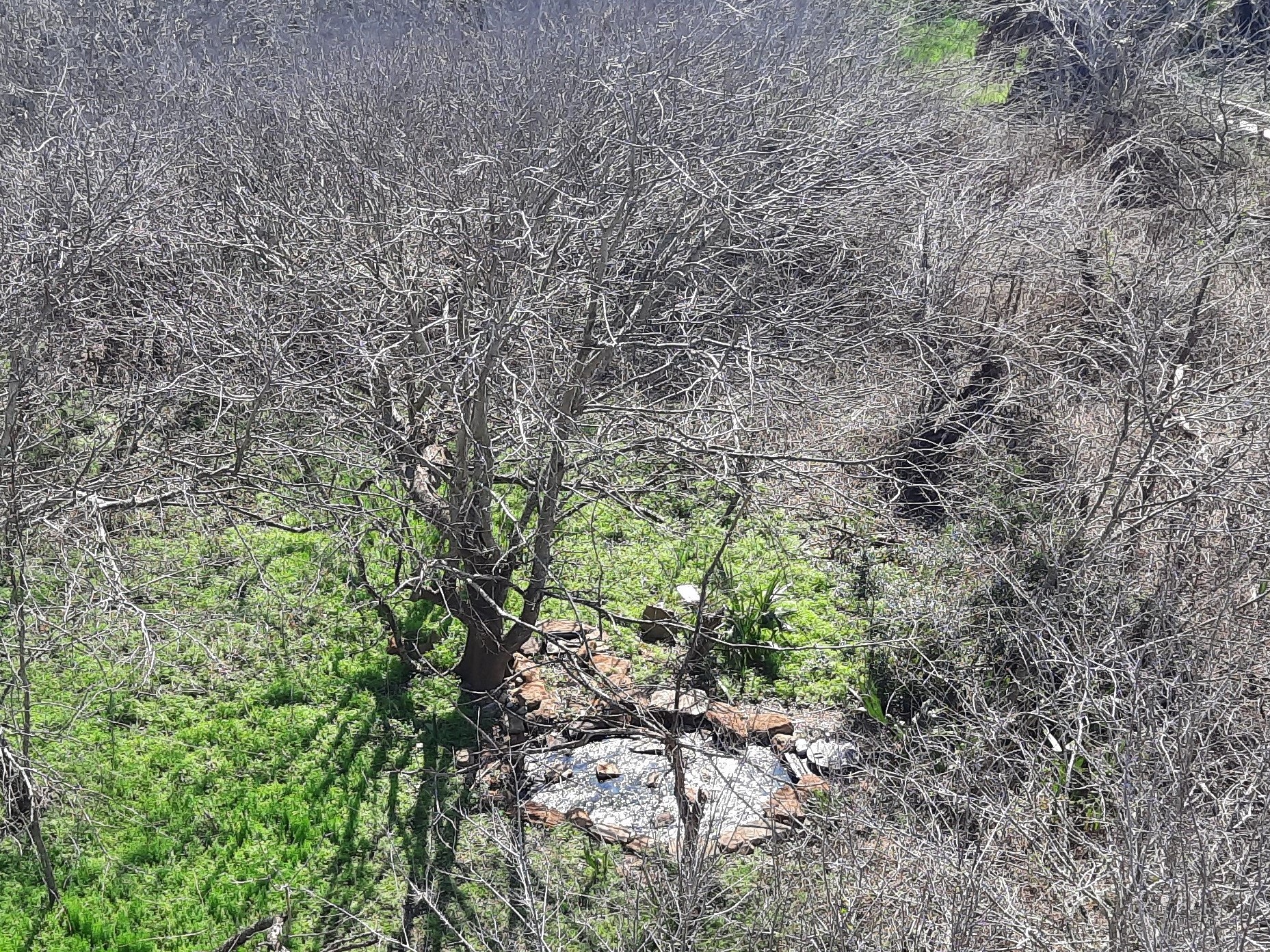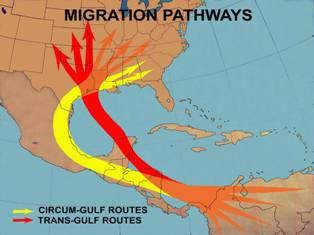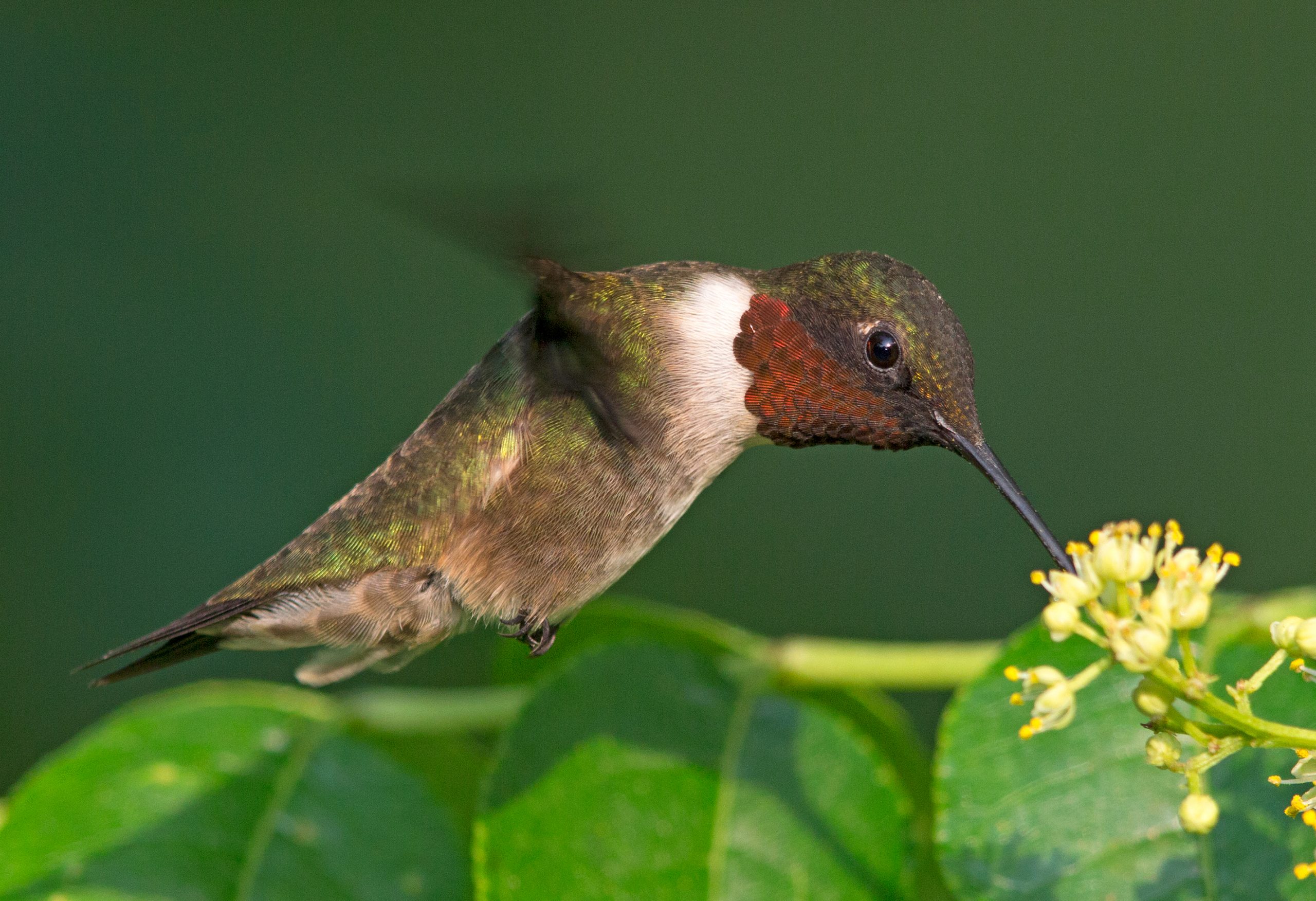Quintana Neotropical Bird Sanctuary is a protected area of land located on the island of Quintana, Texas. This is a sanctuary for birds, particularly during migration season, and can be enjoyed by birders and nature lovers alike. The largest portions of the sanctuary are owned by Gulf Coast Bird Observatory, with smaller portions owned by the Town of Quintana and the Cradle of Texas Conservancy.
The island of Quintana is located about ten miles south of Lake Jackson on the Gulf of Mexico, between the mouths of the Old Brazos and the New Brazos Rivers. This land was once part of the mainland, but when the Intracoastal Waterway was dug the 1920’s, Quintana became an island. Quintana is located directly in the flyway of many neotropical migratory birds. Although tall wooded vegetation on the island is scarce, a critical sanctuary exists, and more land is being preserved by Gulf Coast Bird Observatory.
Plan Your Visit
Quintana Neotropical Bird Sanctuary is located at 814 Lamar St, Quintana, TX 77541. You can climb the steps of our observation tower, explore our interconnecting trails, or simply sit and enjoy the birds and native plants.
Admission
No entry fee is required, though donations are appreciated! This sanctuary is not manned by staff, so please check the entry kiosk for rules and recommendations.
Parking
Visitors may park across the street at the Quintana Town Hall (though there are only a few spots) or in the large grass parking lot (see map)
Timing
The sanctuary is open every day, and visitors are welcome year-round. From April to early May, we host our Spring Fling event at the sanctuary, where GCBO volunteers help answer questions, provide refreshments, and keep a list of the birds seen daily. This is a great time to go birding at the sanctuary, as many migrants will be coming through.
Contact
The Quintana Neotropical Bird Sanctuary is maintained by Gulf Coast Bird Observatory. For questions, please call us at 979-480-0999 or email info@gcbo.org.
Trails
Please view the map below for trails and parking. All trails are relatively flat, and made up of grass or dirt (not paved). Visitors with mobility devices should be advised that some trails may be muddy or uneven, particularly after rains. The tower is accessible only by stairs. The host station and port-o-pottie restrooms are only available during Spring Fling.
Habitat
Most of Quintana Island consists of wetlands and prairie, scrub-shrub, and upland habitat that contains toothache tree, salt cedar, and other woody vegetation. While a large portion of the habitat in the Neotropical Sanctuary is non-native salt cedars, many native Texas flora species can be seen there. This includes Dewberries, Coastal Live Oaks, Indian Paintbrushes, Hackberry, Bluebonnets and Blue Mist Flowers, along with many other species.
In addition to the many floral species, Quintana is also home to many animal species, including many bird species, snakes, mice, and insects.
During the winter, many of the floral species aren't in bloom or haven't grown their green back yet. However, by the time our spring migrants have returned, so has the flora life. You can see the differences between the winter and the spring. With the blooming and growing of the plant life, migrating birds have a fresh opportunity for food and shelter.
Migration
Many of the bird species we see here in North America are migratory. There are a number of reasons that bird might migrate. They might be following the seasonal abundance of food, looking for nesting sites or milder climate. In winter, many birds migrate South to the warmer, southern regions of the United States, Caribbean, Mexico, Central America and South America. In the spring, these same birds fly back north to habitats with ample food and nesting sites. Of these migrating birds, many find themselves on the Upper Texas Coast, which can serve as a breeding grounds, wintering grounds, or simply a stop on their way elsewhere.
Birds taking the circum-gulf route (traveling through Mexico on their way to Central or Eastern North America) pass through Texas as they follow the coast Northeast. Additionally, birds traveling across the trans-gulf route (across the Gulf of Mexico) might fly through Texas on the way to their nesting grounds. These birds in particular need safe, clean, usable habitat to rest in, as the journey across the Gulf can be quite taxing. That is where bird sanctuaries like ours come into play, protecting migrating birds when they are most vulnerable.
Quintana As A Stopover
A stopover site is an area that birds use to rest and refuel while they are migrating. Migrating is difficult work and many birds are practically falling out of the sky when they arrive at their stopover sites. In this depleted state, the birds require a safe place to rest, protected from heat, wind, and predators. They also require clean water and food, which can come in many forms including seeds, insects, fish, fruit, and nectar.
Quintana Neotropical Bird Sanctuary is one such stopover site. We are located directly in the migration pathway of many species, including those flying on the circum-gulf and trans-gulf routes. The sanctuary land is protected, with native plants of all sizes, clean running water, insects, fruit, and safety. Thousands of birds use the site every year, especially in spring when many species are migrating.
We highly recommend visiting the sanctuary during spring migration. Many species migrate through that we don't normally see here, and they are truly worth seeing! Some spring migrant species are the American Redstart, Baltimore Oriole, Hooded Warbler, Rose-breasted Grosbeak, Indigo Bunting, and Painted Bunting just to name a few!
